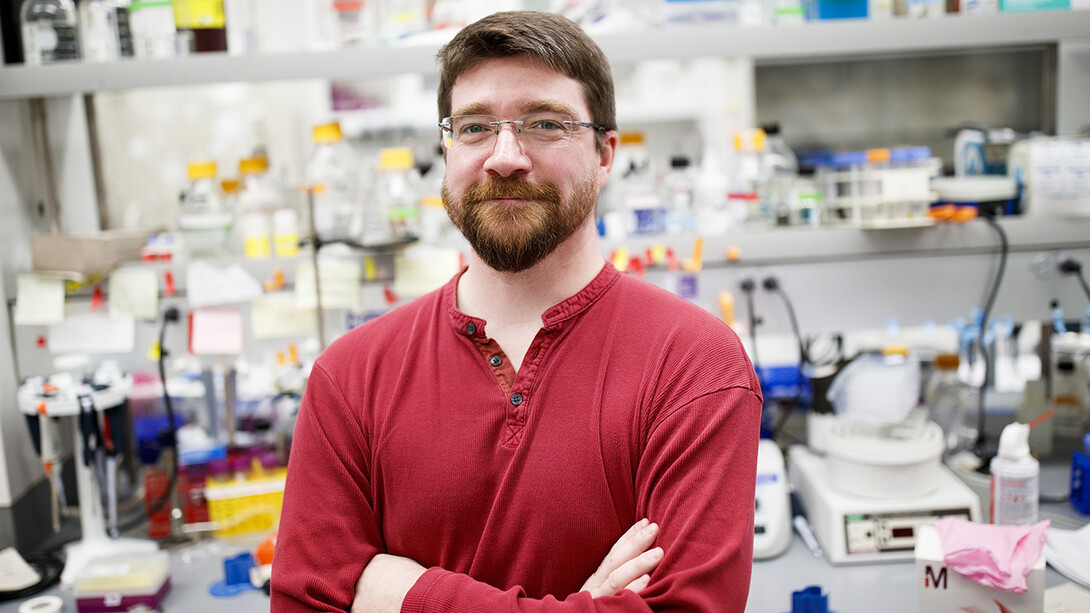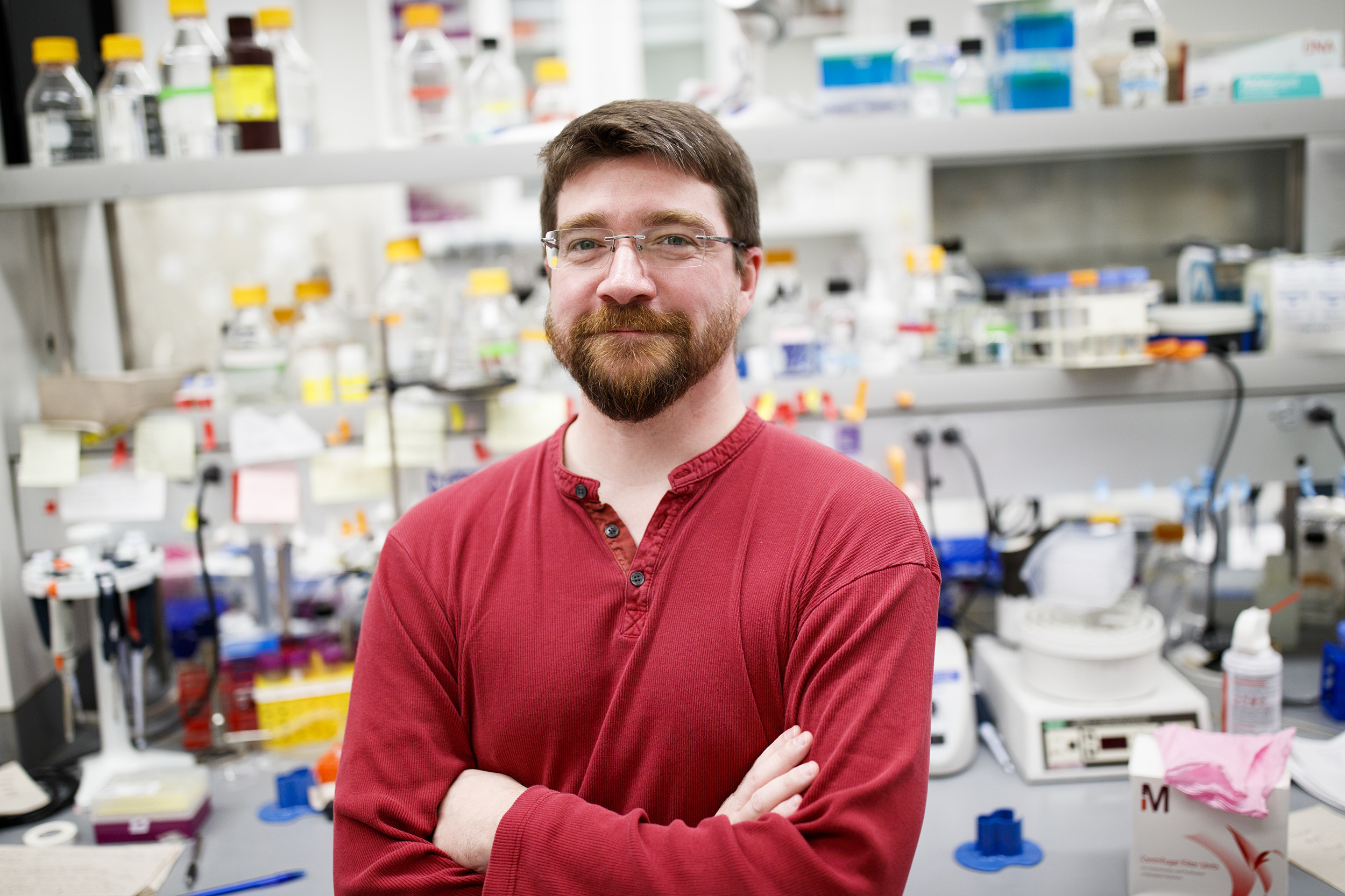
A team of University of Nebraska–Lincoln biochemists led by Mark A. Wilson has received a four-year, $1.18 million grant from the Department of Health and Human Services’ National Institute of General Medical Services to better understand how enzymes work.
Enzymes are specialized protein molecules that perform essential biochemical functions. Despite having studied enzymes for more than a century, scientists still have an incomplete understanding of the physical principles responsible for their remarkable ability to speed up chemical reactions. Wilson’s team aims to understand how enzymes work by using powerful X-rays to make molecular movies of them as they catalyze reactions. The movies show where all of the individual atoms in the enzyme are located and how they move as the reaction proceeds, achieving a longstanding experimental goal in enzymology.
The team’s long-term goal is to better understand the workings of a large class of enzymes that use the amino acid cysteine in their so-called active sites. This class of enzymes has many important members, including the main protease in the SARS-CoV-2 virus. The knowledge gained will improve researchers’ ability to target enzymes with drugs, engineer them with improved properties and develop the next generation of methods to observe enzyme catalysis in real time.
“This funding provides essential support for our efforts to develop the ability to watch enzymes function in real time, and we anticipate that it will support the training of multiple undergraduates, graduate students and postdoctoral fellows,” said Wilson, professor of biochemistry.
Seed grant funding from Nebraska played a critical role in the initial research, Wilson said.
The research team also includes postdoctoral fellow Nathan Smith, research associate Jiusheng Lin and lab manager Peter Madzelan. Medhanjali Dasgupta, a former graduate student now with the Lawrence Berkeley National Laboratory, conducted much of the research that provided preliminary data for the grant.








